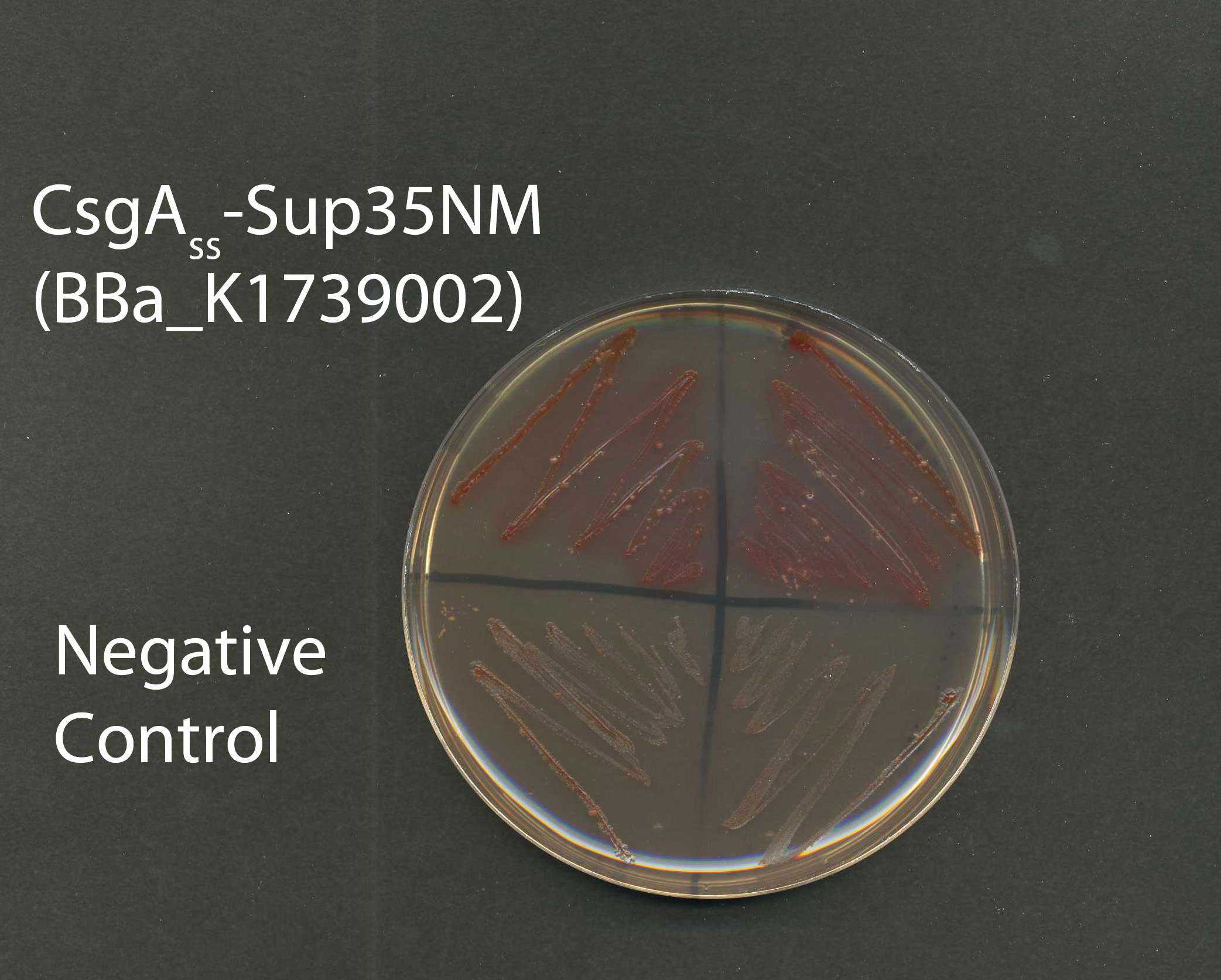Difference between revisions of "Part:BBa K1739002"
| Line 17: | Line 17: | ||
===Validation=== | ===Validation=== | ||
| − | To validate the nature of our part, we first analysed it through gel electrophoresis. We carried out a diagnostic restriction digest using ECORI and PSTI. These enzymes cleave pSBIC3 into a fragment of 2031bp, whereas our insert is 1020bp. We used the gel to check the sizes of our fragments against the Invitrogen 1kB plus DNA marker. We were therefore able to confirm that we had the correct part (see | + | To validate the nature of our part, we first analysed it through gel electrophoresis. We carried out a diagnostic restriction digest using ECORI and PSTI. These enzymes cleave pSBIC3 into a fragment of 2031bp, whereas our insert is 1020bp. We used the gel to check the sizes of our fragments against the Invitrogen 1kB plus DNA marker. We were therefore able to confirm that we had the correct part (see Fig 1.) |
[[File:Team Kent Cgass-sup35 gel.jpg|thumb|center|400px|Figure 1. Shows the agarose gel, following a restrictive digest of our BioBrick containing CsgA<sub>ss</sub> and Sup35NM.]] | [[File:Team Kent Cgass-sup35 gel.jpg|thumb|center|400px|Figure 1. Shows the agarose gel, following a restrictive digest of our BioBrick containing CsgA<sub>ss</sub> and Sup35NM.]] | ||
| + | |||
| + | This BioBrick has been validated using a diagnostic Congo Red agar plate. Our plasmid was transformed into the E.coli strain VS45 and compared to a negative control strain, VS45 with PVS105. The results (shown in Fig.2) confirmed that our plasmid induced amyloid formation due to the growth of red colonies of VS45 with PVS72 in comparison to the white VS45 with PVS105, demonstrating no presence of amyloid nano-wires. | ||
| + | |||
| + | [[File:Team Kent comparisonplate.jpg|Figure 2. Shows our Congo red plates. The top plate depicts both our negative control plasmid, PVS105 and our BioBrick containing CsgAss and Sup35NM.]] | ||
<h1> References </h1> | <h1> References </h1> | ||
Revision as of 16:52, 18 September 2015
Sequence coding for Sup35 with a N-terminal CsgA signal sequence for amyloid export This part uses the BBa_J23104 and has been inserted into the pSB1C3 backbone. The design includes the bipartite csgA signal sequence that targets the protein to the Sec-export pathway and subsequently to the curli export pathway via interaction with csgG (Sivanathan and Hochschild, 2012; Sivanathan and Hochschild, 2013). Sup35-NM is derived from the yeast prion protein Sup35p and excludes the C-terminal domain with the N-terminal domain allowing self-assembly of functional amyloid (Frederick et al., 2014; Glover et al. 1997). This has previously been discussed by Tessier and Lindquist (2009) who show that two beta-sheets bond together in a self-complimenting ‘steric zipper’ that excludes water, leaving a highly stable parallel beta-sheet with one molecule every 4.7 Angstroms. The particular advantage of using Sup35-NM is that in its native state Sup35p has two functional domains, the N and C terminal, separated by the highly charged M domain (Frederick et al., 2014; Glover et al. 1997; Wickner et al., 2007) allowing the fusion of a new functional domain.
Sequence and Features
- 10COMPATIBLE WITH RFC[10]
- 12INCOMPATIBLE WITH RFC[12]Illegal NheI site found at 7
Illegal NheI site found at 30 - 21COMPATIBLE WITH RFC[21]
- 23COMPATIBLE WITH RFC[23]
- 25COMPATIBLE WITH RFC[25]
- 1000INCOMPATIBLE WITH RFC[1000]Illegal SapI.rc site found at 718
Validation
To validate the nature of our part, we first analysed it through gel electrophoresis. We carried out a diagnostic restriction digest using ECORI and PSTI. These enzymes cleave pSBIC3 into a fragment of 2031bp, whereas our insert is 1020bp. We used the gel to check the sizes of our fragments against the Invitrogen 1kB plus DNA marker. We were therefore able to confirm that we had the correct part (see Fig 1.)
This BioBrick has been validated using a diagnostic Congo Red agar plate. Our plasmid was transformed into the E.coli strain VS45 and compared to a negative control strain, VS45 with PVS105. The results (shown in Fig.2) confirmed that our plasmid induced amyloid formation due to the growth of red colonies of VS45 with PVS72 in comparison to the white VS45 with PVS105, demonstrating no presence of amyloid nano-wires.
References
Frederick, K., Debelouchina, G., Kayatekin, C., Dorminy, T., Jacavone, A., Griffin, R. and Lindquist, S. (2014). Distinct Prion Strains Are Defined by Amyloid Core Structure and Chaperone Binding Site Dynamics. Chemistry & Biology, 21(2), pp.295-305.
Glover, J., Kowal, A., Schirmer, E., Patino, M., Liu, J. and Lindquist, S. (1997). Self-Seeded Fibers Formed by Sup35, the Protein Determinant of [PSI+], a Heritable Prion-like Factor of S. cerevisiae. Cell, 89(5), pp.811-819.
Sivanathan, V. and Hochschild, A. (2012). Generating extracellular amyloid aggregates using E. coli cells. Genes & Development, 26(23), pp.2659-2667
Sivanathan, V. and Hochschild, A. (2013). A bacterial export system for generating extracellular amyloid aggregates. Nat Protoc, 8(7), pp.1381-1390.
Tessier, P. and Lindquist, S. (2009). Unraveling infectious structures, strain variants and species barriers for the yeast prion [PSI+]. Nat Struct Mol Biol, 16(6), pp.598-605.
Wickner, R., Edskes, H., Shewmaker, F. and Nakayashiki, T. (2007). Prions of fungi: inherited structures and biological roles. Nature Reviews Microbiology, 5(8), pp.611-618.


